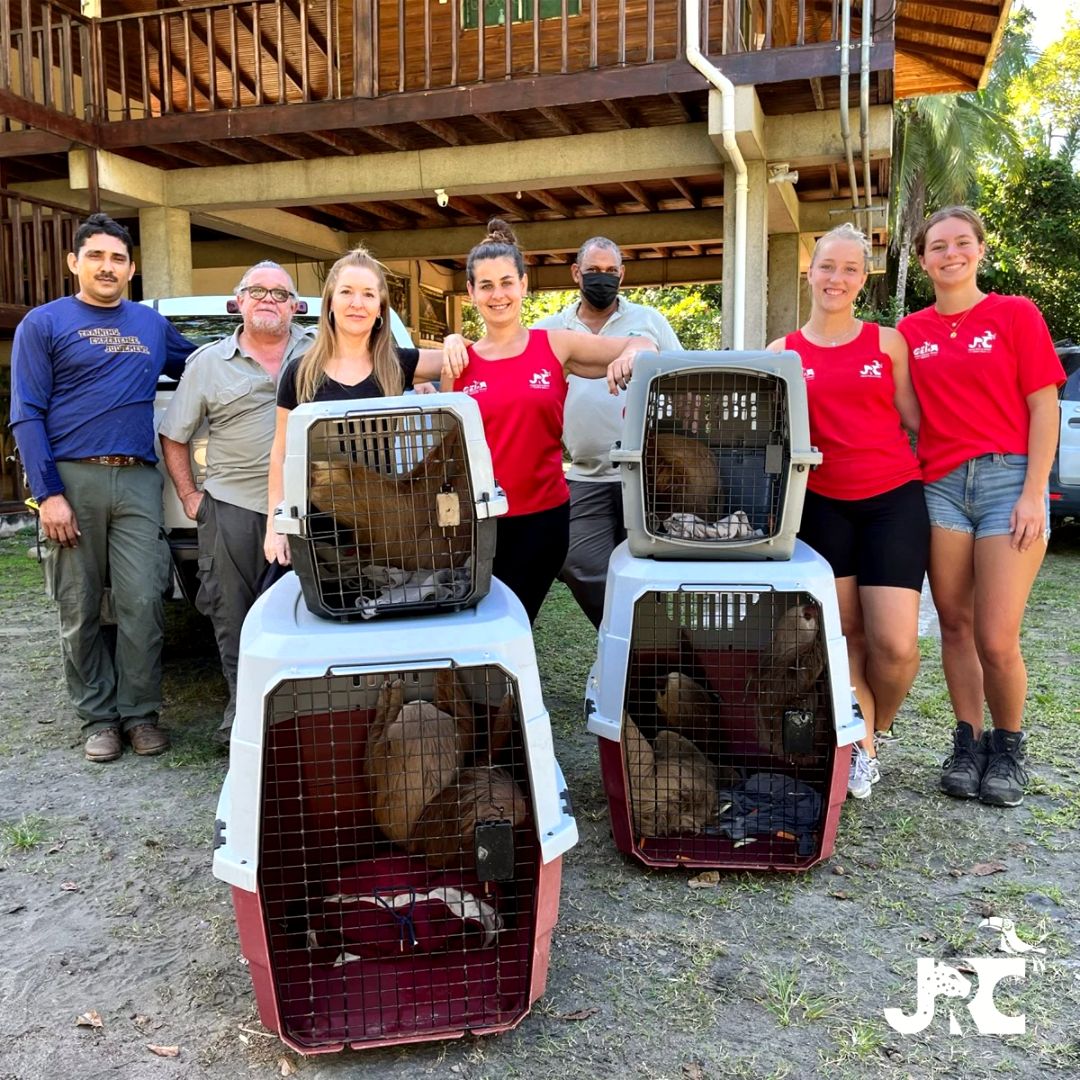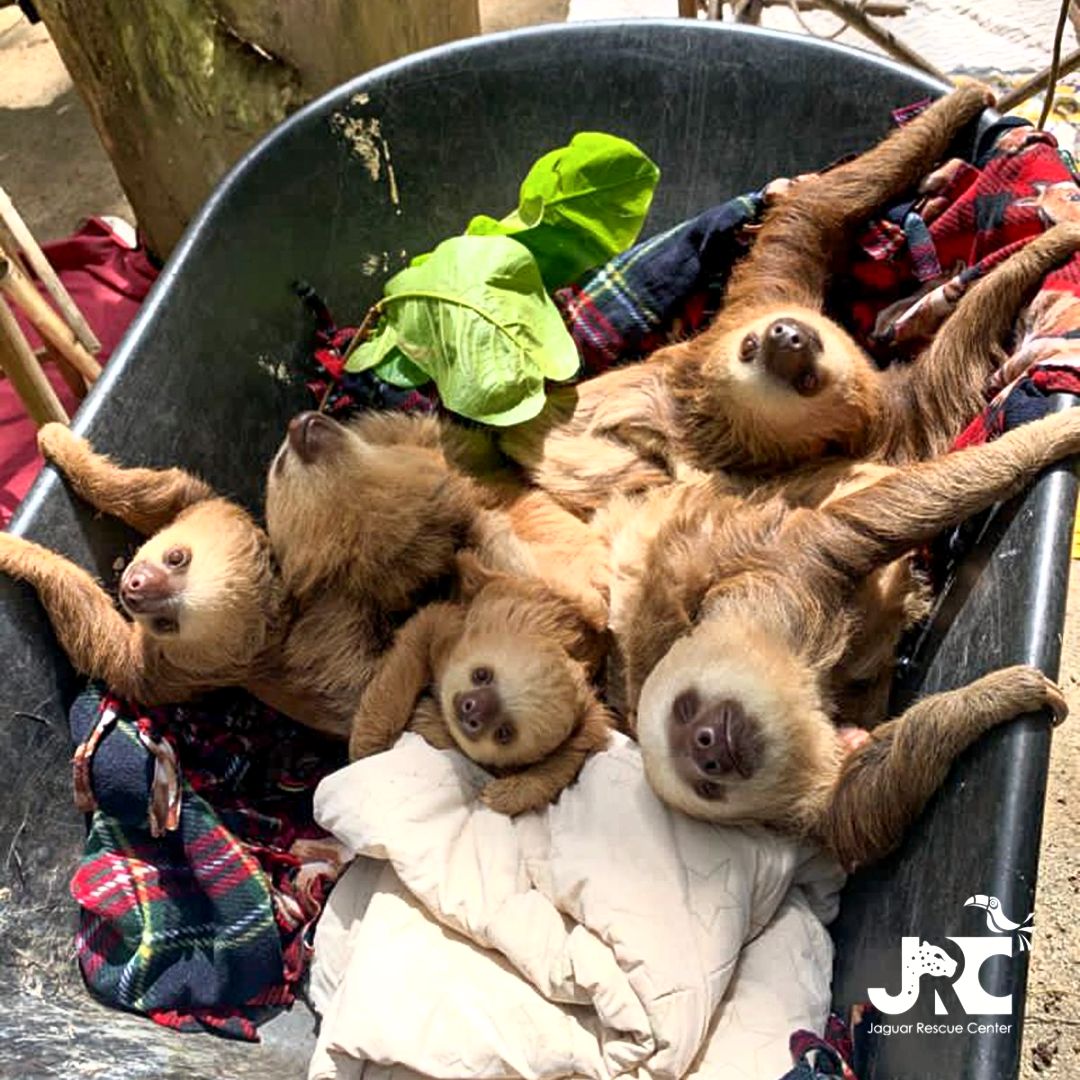We have some incredibly wholesome news for you! A Costa Rican animal rehabilitation facility is teaching orphaned sloths how to survive in the wild. Let’s take a look at how the team at Jaguar Rescue Center (JRC) are teaching sloths how to be sloths!


Image: Jaguar Rescue Center
Jaguar Rescue Center Is Saving Sloths From Extinction
Sloths are one of the most endangered mammals on the planet, with an estimated population of 1,500 individuals still left in the wild. Encar García and the team at the Jaguar Rescue Center (JRC) are working tirelessly to prevent the extinction of this slow-moving, globally-loved species!
The animal rescue and rehabilitation facility — located deep within Costa Rica’s La Ceiba rainforest — offers orphaned baby sloths a chance to survive in the wild (after graduating, of course!). JRC finds and receives a large number of sloths of all ages to rehabilitate, but the baby sloths spend the longest time in the facility before they’re released into the wild.
We're so happy these baby orphans can be released back into the forest where they belong.


Image: Jaguar Rescue Center
Teaching Sloths How To Be Sloths, From Kindy To Graduation!
“How do you teach a sloth to be a sloth? That’s the real question,” said Encar García JRC founder. Although nothing can truly replace the guidance of a mother, the team at JRC have invented an entire adaptation system for the sloths.
“Firstly, we put them with other babies of the same age and we take it through a process that we call ‘high school’, where it goes outside, starts climbing trees and uses our playground. Little by little, it learns to be a sloth,” said García.
In the earlier stages of the program, the sloths are fed a nutrient-rich diet of leaves, twigs, fruits and vegetables. “Learning to find their own food is one of the final stages of their education,” said García. At this point, the sloths are left alone to find food independently.


Image: Jaguar Rescue Center
Before Graduating, The Sloths Are Closely Monitored
Before graduating, the team needs to decide whether the sloth is ready to go out into the wild. In this stage, the sloths spend several days away from the carers — climbing trees, finding food, and acclimatising to their environment. Small cameras are dotted around the forest to monitor their movements.
“At this point we leave them on their own the whole time, and they do not have any kind of care. They have to find food by themselves. After this last process, we can see that they are wild and ready to graduate,” said García.
Once the sloths are ready to graduate, the team will microchip them to monitor their travels. Plus, they apply brightly-coloured nail polish to their nails and a coloured braid to their fur to identify them in the wild.


Image: Jaguar Rescue Center
Why Are There So Many Orphaned Sloths?
Although it’s life-saving work, you might be wondering why JRC rehabilitates so many baby sloths. Unfortunately, life is fairly tough for these slow-moving creatures. Sloths are an integral part of Central and South American rainforests — but with ongoing threats like habitat loss (deforestation) and illegal hunting, the number of wild sloths has dwindled to 1,500.
Abandoned baby sloths are found quite frequently in Costa Rican rainforests. Unfortunately, it’s common for their mothers to die from electrocution, road collisions, and wild dogs.
“It’s a constant battle,” said García. But, “It’s a great feeling to see that all of the work that has been done by our entire team over three years has resulted in freedom for these wonderful animals”. After spending time with the amazing carers at JRC, the sloths live a life of freedom in Cahuita National Park!
How sweet is this story! The work that Encar García and the team at JRC are doing to help orphaned sloths live independently is incredible.
For more heartwarming wildlife conservation stories, head over to our Eco News category and check out the blogs below — we think you’ll love them!
Mexican Sea Turtle Conservation Group Releases 8,000 Turtles Into The Gulf Of California
Great Barrier Reef’s Four-Year Coral Nurture Program Experiences “Unprecedented Success”

